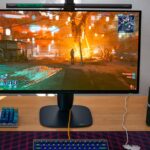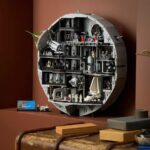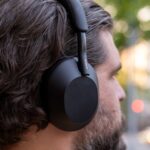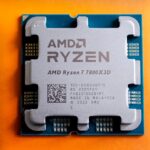Why you can trust TechRadar
We spend hours testing every product or service we review, so you can be sure you’re buying the best. Find out more about how we test.
Nacon Revosim: one-minute review
It’s official: direct drive PC racing wheels have entered the affordable mainstream. While the prices of your groceries continue to skyrocket, simultaneously, sim racing hardware manufacturers have found a way to package high-quality, high-torque bundles together for south of $1,000, and newcomer Nacon introduces a new level of build quality and construction materials in that sub-$1,000 price point with its debut Revosim bundle.
The wheelbase can exert up to 9Nm of torque (translation: loads), which is notably more than the Thrustmaster T598, the no-brainer entry-level direct drive wheel. It’s cheaper than Moza’s R9 bundle while offering very similar build quality. It’s also more affordable than most variations of Fanatec’s CSL DD 8Nm bundles, and while Fanatec generally has the edge with the wheels it produces, Nacon’s pedals are superior to the ones Fanatec bundles in its sub-$1,000 CSL packages and it includes a strong and sturdy quick-release mechanism.
All that talk of prices and rival offerings is abstracting the headline news, though: driving feels good with this bundle. Although it’s still missing some default force feedback profiles and control assignment schemes in some titles (like F1 24, for example), there’s power and articulation right out of the box, with no need to tweak alpha values in the accompanying software.
And in the likes of Rennsport, Assetto Corsa Evo, The Crew Motorfest, and Le Mans Ultimate, which support it natively already, it feels right as soon as you hit the track. Extras like the phone mount attachment and swappable button fronts with custom stickers are also a very impressive value-add.
There’s a caveat: while it’s a fantastic option to add to a sim racing cockpit, it’s wholly impractical for desktop use. The pedals move around on the floor and will tip over when you hit the brake, and the desktop clamps protrude so far below the desk that they’re bound to hit your knees.
It’s for Playseat setups only, but in that context, Nacon’s bundled together a winning combo of powerful wheelbase, nicely finished wheel with customizable buttons, and smart and solid pedals with adjustable load cells so you can adjust the required stamping force to taste.
Nacon Revosim: Price and availability
- List price: $799.99 / £699.99 (around AU$1,435)
- Priced higher than Thrustmaster’s T598 but lower than Moza and Fanatec 8Nm and 9Nm bundles
- Considering features and quality, it hits the price sweet spot
Price is a huge factor in this bundle. Nacon’s hit a really competitive point while adding extra features like a phone mount and customizable buttons, and with no signs of having cut corners on construction materials. Plastic is not prevalent in this bundle, and all the weighty, brushed aluminum used throughout is impressive for the price.
Thrustmaster’s T598 is the chief rival, since it’s currently the best affordable DD wheel bundle on the market, but Moza’s R5 and R9 bundles, along with Fanatec’s various CSL DD bundle configurations, are also in similar price territory.
Nacon Revosim: Specs
|
Price |
$799.99 / £699.99 (around AU$1,435) |
|
Weight |
52.9lb / 24kg |
|
Peak torque |
9Nm |
|
Features |
Direct drive, customizable button covers, quick release wheel, two-pedal base, phone mount attachment |
|
Connection type |
USB-A |
|
Compatibility |
PC |
|
Software |
Revosim Software |
Nacon Revosim: Design & features
- Great finish quality on wheel and pedals
- Wheelbase looks like Fanatec or Moza’s designs
- Customizable details
The simplest terms you can use to appraise the design of a piece of sim racing hardware are these: does it look like it came out of a racing car, and does it feel like you’re driving a racing car when you use it? You don’t see RGB light zones on sim wheels for that reason. It’s supposed to immerse you in a virtual cockpit.
I’m really impressed by how well Nacon has managed to nail this aesthetic with its debut sim racing product. The wheelbase is compact and no-frills like Moza and Fanatec’s direct drive servos, but the wheel, quick release, and pedals all look and feel admirably automotive.
The wheel is the star of the show here. The wheel itself is finished in stitched pleather with a mixture of grippy perforated texture around the contact points and a smooth finish at six and twelve o’clock, with a white centering stripe at the very top. The quality of the stitching is extremely neat and tidy with zero loose threads on my review sample, and there’s a satisfying amount of cushioning to the wheel that I appreciated when the base was giving me jolts of feedback at full force to indicate collisions.
The input layout includes 12 face buttons, 11 of which have swappable keycaps with different color options and supplied stickers, one scroll wheel, a POV hat switch, and two magnetic switches on the back. Additionally, the scroller and hat switch can be pushed in to register a separate input binding.
That’s plenty for any racing sim. Personally, the most demanding title I play in terms of inputs is Assetto Corsa Competizione, and generally, I prefer to have two on-wheel dials to adjust TC and engine maps. That’s achieved easily enough on the Revosim, though, since the hat switch also has a rotational dial input. That leaves plenty of button inputs free for lights and wiper controls, menu commands, pit controls, and a view change.
The wheel shape and size is round, with less of a flat bar bottom than Moza’s R5 or R9 wheels, but neither is it perfectly round like the Thrustmaster T598. That means it’s just about applicable for any racing discipline from open wheeler stuff to rally and drift, though being a round wheel, it’s better suited to the latter two.
Nacon doesn’t currently make any other wheels to swap in its place, so if you’re a hardcore F1 racer, you might be better served by the likes of Fanatec’s CSL F1 bundle with its smaller F1-shaped wheel, though let’s be honest – in terms of lap times, there’s going to be very little difference.
I love the feel of the face buttons. They feel almost like mechanical switches (they’re not), and although there’s a tiny bit of lateral play, they feel of far superior quality to the input buttons on most sub-$1,000 wheels. The fact that their faces can be swapped out in different colors and stickers can be added to them from a supplied sheet is, I’m surprised to note, quite a big deal to me. It’s intrinsically enjoyable to set the wheel up with buttons particular to a specific game. The rotary dial and hat switch are less spectacular in how they feel, but they do the job reliably.
And if you’re going to install this into a cockpit, that’s all you need to know. There’s no ‘but’. For desktop users, though, the ‘but’ is considerable. This isn’t really a desktop-use wheel.
Some might argue that it’s priced high enough that the vast majority of its end users will have race seats anyway, but the fact that it’s bundled with desk clamps and marketed as being compatible for use on a desk means I have to judge it on those terms too, and the fact is it’s very awkward to use this base when clamped to your desk. The clamps will secure it tightly enough to withstand that 9Nm of force, but the clamps’ positioning and length mean you’re very likely to bang your knees against them, or else have to sit in a strange position to avoid them.
Down at ground level, the design of the pedal modules themselves is problem-free. Nice big contact patches with your feet, a variety of elastomers for the brake pedal’s load cell, so you can adjust stiffness. But the base design is once again not really fit for use outside of a cockpit.
The grip surfaces on the base don’t grip hard enough, and there’s nowhere near enough weight at the bottom of the pedal base to prevent it from tipping when you hit the brake, even when using the weakest elastomer. When you screw this directly to a cockpit pedal mount, it’s rock-solid and feels fantastic to use… but only then.
Let’s finish with a positive, though, to underline that poor desktop use is the only negative about this bundle. The quick-release mechanism is really exemplary stuff. Fanatec owners will probably break into a sweat at the mere mention of quick releases, since the company’s move from the QR1 to QR2 standards was nothing short of a debacle due to stock issues and the consumer experience is still confusing since several different tiers of QR2 mechanism are available for purchase, separate from the wheels themselves, and both wheel-side and base-side components need to be bought. Nacon’s mechanism creates a wonderfully tight, secure feel with no rattle or play between the wheel and base, and taking the wheel on and off is a smooth operation.
Nacon Revosim: Performance
- Smooth, powerful torque delivery
- Low latency articulation in games
- Not all games have default mappings yet
Yes, it feels great to drive a lap with the Revosim. But to quantify exactly how good, we need to break it down in context.
First, direct drive versus belt-driven wheels. Belt-driven was the prevalent technology during force feedback wheels’ emergence in gaming, and it can give you plenty of feeling and a meaty jolt when it needs to. But inherent to the technology is a grainy feeling when rotating the wheel, a noisy motor, and ‘cogging’ – a sensation of the wheel snapping between tons of resistance and none, because the motor can’t keep up with the information being fed into it to articulate the feedback quickly and precisely enough.
Direct drive is a pricier alternative that articulates the force feedback without any belts, gears, or pulleys, and that means it’s faster, smoother, and feels closer to the real thing. Until very recently – the last 2-3 years – it’s been a prohibitively expensive tech which only enthusiasts have invested in, but following the lockdown sim racing boom, manufacturers including Thrustmaster, Logitech G, Fanatec, and the major industry disruptor Moza have all brought affordable, sub-$1,000 direct drive wheels to market.
So, firstly, in the most fundamental terms, Nacon’s Revosim wheel feels like a big step up compared to any belt-driven wheel, like the Logitech G923, or even Thrustmaster’s T-GT II, the Rolls-Royce of conventional belt-driven models.
So the real question is how it compares to those other direct drive bundles in the same price bracket. Most enthusiasts who follow the market will look straight to the 9Nm of torque, since on paper it’s a big selling point.
Thrustmaster’s T598 offers just 5Nm on the spec sheet, though the wheelbase uses a new axial drive tech which seems to be able to effectively ‘overclock’ torque and generate a much more muscular sensation than the number suggests. Moza’s R9 bundle offers 9Nm but sells for around $1,000, while Fanatec’s CSL DD QR2 base will get you to 8Nm for under $400, but that’s just for the base, not a bundle with a wheel or pedals.
However, after spending many hours with both the T598 and this wheel, I’m less of a stickler for the power numbers. The Thrustmaster is capable of outputting enough resistance to make my hands feel like they’re in a Tough Mudder after five laps, and let’s not forget that turning the steering wheel of a real car is not a feat of strength, even at speed and during traction loss. Articulation is what matters, and while max torque output is a part of that equation, it’s not as simple as looking for the higher number and deciding that’s better.
Back to the opening statement, then: it feels good to drive a lap with the Revosim because it’s capable of conveying weight transfer, traction loss, the unsettling floatiness of a car under heavy braking, and the quick spasms your wheel can make in complaint when you try to put a lot of power down in a low gear. For their part, the pedals both feel comfortable and offer the right amount of resistance, particularly so for the adjustable load cell brake pedal.
A final word should go to the inclusion of a phone mount, so that you can use a smartphone app like Simhub to turn your phone into a digital cockpit display. In real terms, this is just an extra piece of plastic in the box, but it’s a small inclusion that elevates the driving experience so much. That tells the story of the overall package: little details and additions that turn a good bundle into a great one.
Should I buy the Nacon Revosim?
Buy it if…
Don’t buy it if…
Nacon Revosim: also consider…
If the Nacon Revosim doesn’t turn your head, try these similarly priced rivals.
| Row 0 – Cell 0 |
Nacon Revosim |
Thrustmaster T598 |
Thrustmaster T-GT II |
|
Price |
$799.99 / £699.99 (around AU$1435) |
$499.99 / £449.99 (around AU$899.99) |
$799.99 / £699.99 (around AU$1,211.99) |
|
Weight |
52.9lbs / 24kg |
14.1lbs / 6.4kg |
29lbs / 13.2kg |
|
Peak torque |
9Nm |
5Nm |
Around 6Nm |
|
Features |
Direct drive, customizable button covers, quick release wheel, two-pedal base, phone mount attachment |
Direct drive, modular pedal base, detachable rim, 100% torque overshoot |
Detachable wheel, three-pedal base |
|
Connection type |
USB-A |
USB-A |
USB-A |
|
Compatibility |
PC |
PS5, PS4, PC |
PS5, PC |
How I tested the Nacon Revosim
- Tested in F1 24, F1 25, Rennsport, ACC, and AC Evo
- Two weeks of testing in a cockpit and on a desktop
- Variety of elastomers used, custom FFB profiles tested
Although it’s cheap for a direct drive wheel, this is still a big financial outlay, so the intended audience is the sim racer who goes where the serious competition lies. With that in mind, I headed to various racing sims where the hotlap leaderboards are fiercely contested and where PvP racing is (usually) conducted with a degree of sporting consideration. I also played F1 24 and F1 25.
Those titles run the gamut of supported and non-supported games, but even in the non-supported ones, I didn’t run into any major difficulties besides having to set my input binds button by button. Force feedback response was convincing and useful in every game.
I swapped out the elastomers to try a variety of braking stiffness levels, and while everyone has a preference, the important thing is that there’s sufficient variance out of the box that most racers will be able to find their preferred feel.
The same goes for force feedback strength – I tweaked a few values in all the games I played, to get a sense of where the min and max are for its feedback types, and found that both the floaty (cheaty) super-low FFB feel and the muscular, jolty response types are possible here with minimal tweaks.
First reviewed August 2025
Read more about how we test
Read the full article here












